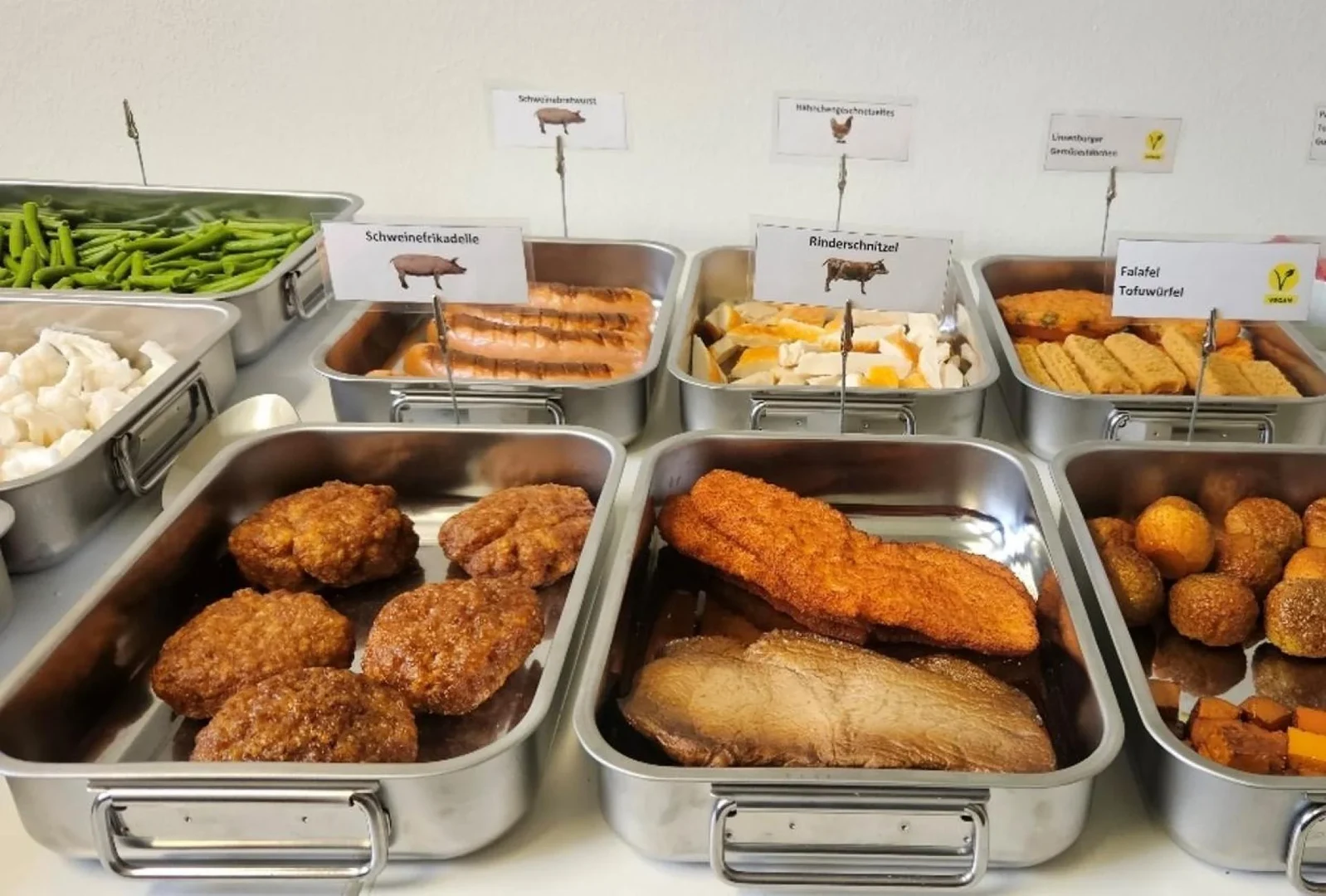Together with researchers from the Institute for Food and Resource Economics, Alice Seffen, Dr. Julia Meis-Harris, and Prof. Simone Dohle investigated how the visualisation of animals influences meat choices.
Previous online studies suggest that showing meat products (e.g., a sausage) alongside images of the corresponding animals (e.g., a pig) can trigger an uncomfortable feeling—known as cognitive dissonance. This feeling arises when one's behavior (e.g., eating meat) does not match one's beliefs (e.g., protecting animals is important). According to earlier research, experiencing such dissonance can lead people to choose less meat. However, most of this evidence comes from online studies. It remains unclear whether these effects also occur in more realistic settings.
Therefore, we conducted an experiment using the Fake Food Buffet—a realistic-looking buffet composed of food replicas. Participants were asked to select a lunch from the buffet. Depending on the experimental condition, the buffet included no animal images, schematic animal images, or realistic animal images. We hypothesized that participants exposed to animal images would experience more cognitive dissonance and consequently select fewer meat products. We also expected realistic images to have a stronger effect than schematic ones.
The result: Surprisingly, there were no differences between the groups—neither in experienced dissonance nor in the amount of meat chosen. Thus, animal images at the buffet did not reduce meat consumption.
Our study suggests that effects observed in online experiments may not readily translate to real-life behavior. Displaying animal images at a buffet does not appear to be a promising strategy to reduce meat consumption. Future research should investigate how the design of animal images (e.g., age of the animal, camera angle) influences their effect and test such strategies in real-world settings, such as cafeterias.

